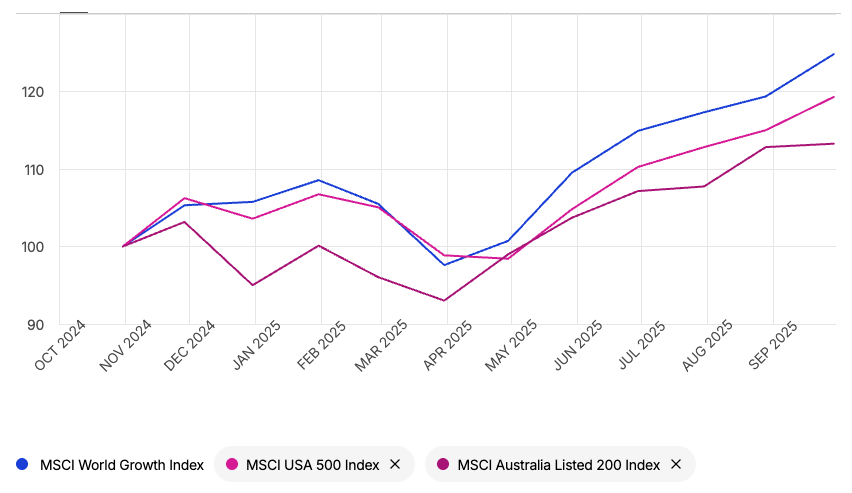The overlooked investing strategy that could be perfect for today's stock market
If you're a stock investor worried about the heightened valuations in Australian and global equities, you're not alone.
Markets are at record highs, despite many of the big headwinds that have preoccupied investors recently still swirling away in the background.
The dilemma becomes not wanting to miss out on any further upside, while not getting caught out if the market does decide to correct, or worse, crash.
So what's an investor to do if they want to have their cake and eat it too?
The barbell strategy
Modern polymath Nassim Nicholas Taleb has created and popularised a number of concepts that have become part of the wider investing parlance: black swan events and anti-fragility are two that spring to mind.
But it's Taleb's barbell strategy that investors should be paying attention to as a way to play the current market dynamics.
For those unfamiliar with the idea, the original barbell strategy proposes a balanced, two-pronged approach to fixed income investing.
It suggests investing in a mixture of short- and long-term bonds, which balance out like the two ends of a weightlifter's barbell.
But the idea can be extended to other asset classes, including equities.
Despite the surface similarities between the two approaches, it's actually more the inverse of the classic 60/40 portfolio.
Whereas a 60/40 portfolio is considered a long-term approach for the moderately risk-averse, the barbell strategy means balancing higher-risk assets and lower-risk assets, with nothing in between.
As a general disclaimer, I'm not telling you to necessarily adopt this strategy.
It's merely a thought experiment to get you thinking about the best way to play the current stock market if you're concerned about downside risk.
Doing the heavy lifting
So what makes now a good time to consider the barbell strategy?
With many asset classes, including equities and gold, at all-time highs, there's a clear argument that your investing approach should both lean into the frothiness while also protecting against it.
In simple terms, it may make sense for stock investors to avoid anything in the middle of the risk spectrum right now.
If we get a stock market crash as many are calling for, middle-of-the-road stocks (and broader indices) will likely still suffer, but won't offer the same overall upside potential as growth stocks.
Instead of leaning away from the areas of the stock market driving all the returns right now, it might be better to lean in and find downside protection elsewhere.
On the high-risk side of your barbell, invest in the stocks leading the charge right now, whether that's the Mag 7, AI, defence or any other current growth narratives.
If the party carries on and the market continues to rally, you'll capture most of the upside.
If the party stops, there'll naturally be downside risk, but that's where the other end of your barbell can pick up the slack.
On the other end, you invest in low-risk assets like government bonds (or highly-defensive stocks if you want to maintain more equities exposure).
In the event of a stock market crash, an allocation to longer-term bonds will not only offer a better gross return, it will protect a decent chunk of your portfolio from negative returns.
Putting it to the test
So how would a hypothetical, juiced-up barbell strategy compare to a broad equities-only portfolio?
For the equities portfolio, we'll use a simple ASX 200 index fund as the proxy.
For the barbell strategy, orthodoxy would suggest allocating a much higher proportion of your portfolio to the low-risk end of your barbell.
However, as we're talking about predominantly equities investors, we want to maintain decent exposure to the stock market, so instead will opt for a 50/50 split.
we'll invest 50% in the MSCI World Growth Index (as a proxy for a growth-focused stock portfolio) and 50% in Australian 10-year bonds, which are currently yielding 4.358% at the time of writing.
The MSCI World Growth Index has returned 18% year-to-date, compared to 14% for the S&P 500 and 11% for the ASX 200 (net total return).
We'll check back in a few months and see which strategy performed better.

Of course, there's always the option of further dialling the risk, whether up or down.
One could opt for lower-risk, shorter-term bonds at one end, and even higher-risk assets at the other (such as out-and-out growth stocks or crypto).
For those wanting to stick to equities only, you could employ a barbell strategy with growth stocks on one end and defensive or "value" stocks on the other. This would potentially give you the same "have your cake and eat it too" outcome.
4 topics

